Composting Hub
Composting is a great way to reduce waste at home! Follow our handy tips below.
What is composting and why should we do it?
Composting is a natural process that involves the breakdown of organic materials such as kitchen scraps, yard waste, and other biodegradable materials into a nutrient-rich soil fertiliser. Here’s why composting is so great:
Reduces landfill waste
Composting keeps organic waste out of landfills, where it would otherwise take up space and emit harmful greenhouse gases.
Improves soil quality
Compost is a natural fertiliser that provides nutrients to plants and helps to keep moisture in the soil.
Saves money
Composting removes the need to buy expensive chemical fertilisers and lowers waste disposal costs.
Conserves resources
Composting helps to save water by improving soil's ability to hold moisture.
Here are some of the top reasons why sending food scrap and garden waste to the landfill is a problem:
- Methane emissions: Organic waste that is sent to landfills rots under anaerobic (oxygen-free) conditions which creates methane (CH4), a potent greenhouse gas that drives climate change. Methane is 28 times more potent at trapping heat in the atmosphere than carbon dioxide (CO2).
- Soil contamination: Landfills can contaminate soil and groundwater with leachate, a liquid that forms when rainwater and other liquids come into contact with decomposing waste . It needs to be captured and treated on site.
- Odour: Organic waste in landfills (and in your landfill bin) can produce unpleasant odours!
However, there is an easy answer: instead of sending your kitchen and garden waste to the landfill, simply compost it onsite!
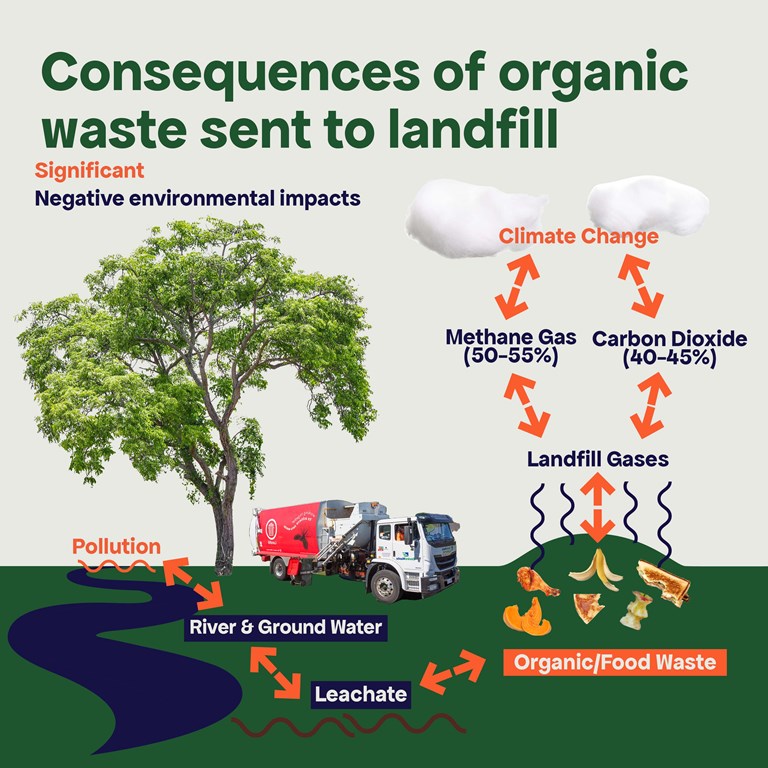
If you don’t already compost at home, now’s a great time to get started. Head to the NPDC website to learn how to set up a worm farm, Bokashi bin or compost bin to turn your food scraps and/or garden waste into a valuable fertiliser for use in your garden or for your indoor pot plants.
For any food scraps that you cannot compost at home (citrus, bones, meat, shellfish, bread, cooked food etc.) place these in the NPDC food scraps bin for weekly collection.
Not sure what system would be best for you? Download the interactive PDF here!
If you haven't quite got things together to get started with composting now, you can dig your food waste into a trench, as shown in this short video below from Sustainable Taranaki.
Rosie has a few tips as well for you:
Getting started
A compost pile should sit straight on the soil, and be positioned away from your home and any dogs. Ideally it should be at least 1 m high x 1 m wide x 1 m deep.
To create a compost bin or pile, use materials you already have in your shed or garage, such as:
- Wood, pallets, fencing, tin, bricks or concrete blocks, formed into a three-sided square.
- Or chicken wire, wire mesh, sacks or netting, formed into a circle with stakes or branches, and wire or string to hold down the loose edges.
- A large cardboard box, sack, or plastic rubbish bin or container (just drill some holes in the base for air).
Alternatively, simply cover a heap of layered material with a plastic tarp, or a piece of tin, old carpet or untreated plywood. This will help retain moisture and heat, and protect your compost pile from rain.
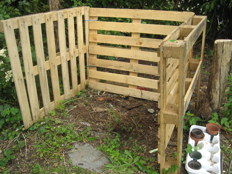
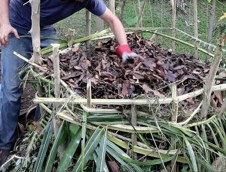
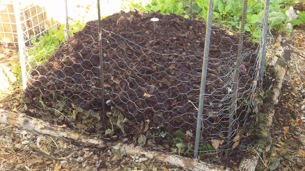
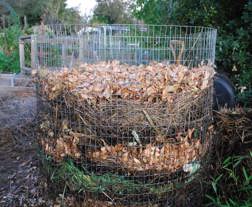
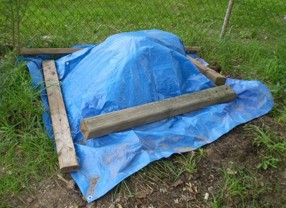
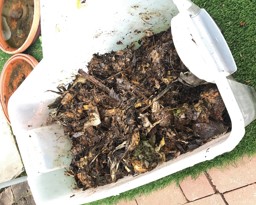
To deter rodents, dig a trench and then place your wire circle down below the level of the soil, or place a rat trap next to your bin.
Whatever set up you chose, start your compost off with a good layer of twigs or small branches, to bring in air to speed up the composting process.
What can I compost?
To make great compost and avoid smells, you need to add more ‘Browns’ than ‘Greens’. You should ideally aim for 70% brown to 30% green materials from the list below.
Browns are mainly made from carbon, and are dry and brittle. Greens are full of nitrogen and moisture, so they break down quickly, but can also become smelly. Together, browns and greens make great compost. Ensure that larger items such as paper and cardboard are ripped into small pieces to speed up the composting process.
Sources of browns and greens for your home compost include:
Browns
- Paper and newspaper (no thermal receipts, or shiny, waxy or metallic paper)
- Paper bags
- Kitchen paper towels
- Egg cartons (rip)
- Cardboard (remove tape, rip)
- Dry fallen leaves
- Dry grass clippings
- Egg shells (crush)
- Wood ash
- Pet or animal hair
Greens
- Food scraps
- Coffee grinds
- Tea leaves and teabags (no plastic pyramid bags)
- Fresh grass clippings
- Garden clippings
- Non-invasive weeds
- Old flowers
Looking after your compost
Continue layering greens and browns so there is a good mix throughout your pile, with more browns than greens.
Compost piles also needs moisture and oxygen.
Without air, your pile will start to smell. You may need to add water to dry layers to always keep your compost moist like a sponge. You can also keep moisture in (and avoid sogginess when it rains) by covering your compost with a piece of tin, wood or carpet. A cover also helps keep away flies and other insects.
If your pile is getting too compacted, aerate it by digging in a garden fork, branch or stake and opening up some holes.
When you turn or spread your finished compost you should wear a facemask and gloves to minimize any risk of catching legionella disease.
Resources to learn more
View our A-Z Zero Waste Directory
Find local options for donating, recycling and disposing your items safely and correctly.
